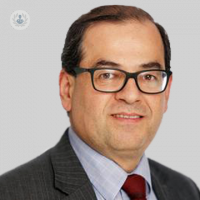What we need to know about osteotomy
Escrito por:In this article below, distinguished orthopaedic surgeon, Mr Ahmad Ali, provides us with an all-you-need-to-know guide with regards to osteotomy.

What is an osteotomy?
An osteotomy is a surgical procedure that involves cutting and reshaping bones to correct alignment issues, relieve pain, and improve function. It is commonly performed on weight-bearing joints such as the knee, hip, and spine, but can also be applied to other bones in the body.
What conditions might necessitate an osteotomy?
Osteotomy is often recommended for conditions such as osteoarthritis, knee deformities (like bowlegs or knock knees), hip dysplasia, and certain types of fractures that have healed improperly. It can also be used in cases where joint replacement surgery is not suitable, especially in younger patients.
How is the procedure performed?
The specific technique varies depending on the bone and condition being treated. Generally, the surgeon makes an incision over the affected bone, then cuts and repositions the bone to the desired alignment. The bone is stabilised using screws, plates, or external fixators. Over time, the bone heals in its new position.
What are the benefits of an osteotomy?
Osteotomy can delay or even eliminate the need for joint replacement surgery, particularly in younger patients. It helps to preserve the natural joint, maintain joint movement, and reduce pain by redistributing weight away from damaged areas. This can significantly improve the patient's quality of life.
What are the risks associated with osteotomy?
As with any surgery, osteotomy carries risks such as infection, blood clots, nerve damage, and complications related to anesthesia. There is also a risk that the bone may not heal properly or that the correction may be insufficient, necessitating further surgery.
What does the recovery process involve?
Recovery from an osteotomy varies depending on the individual's overall health, the bone involved, and the complexity of the surgery. Patients typically need to limit weight-bearing activities for several weeks to months, using crutches or a walker. Physical therapy is crucial to regain strength, flexibility, and function. Full recovery can take several months.
Who are ideal candidates for an osteotomy?
Ideal candidates are usually younger, active individuals who have joint damage or deformity but still have good joint space and cartilage remaining. They should be motivated and able to commit to a comprehensive rehabilitation programme post-surgery.
Osteotomy is a valuable option for those looking to correct bone alignment issues and improve joint function, offering an alternative to more invasive procedures like joint replacement. Consulting with an orthopedic specialist can help determine if this procedure is the right choice for you.


